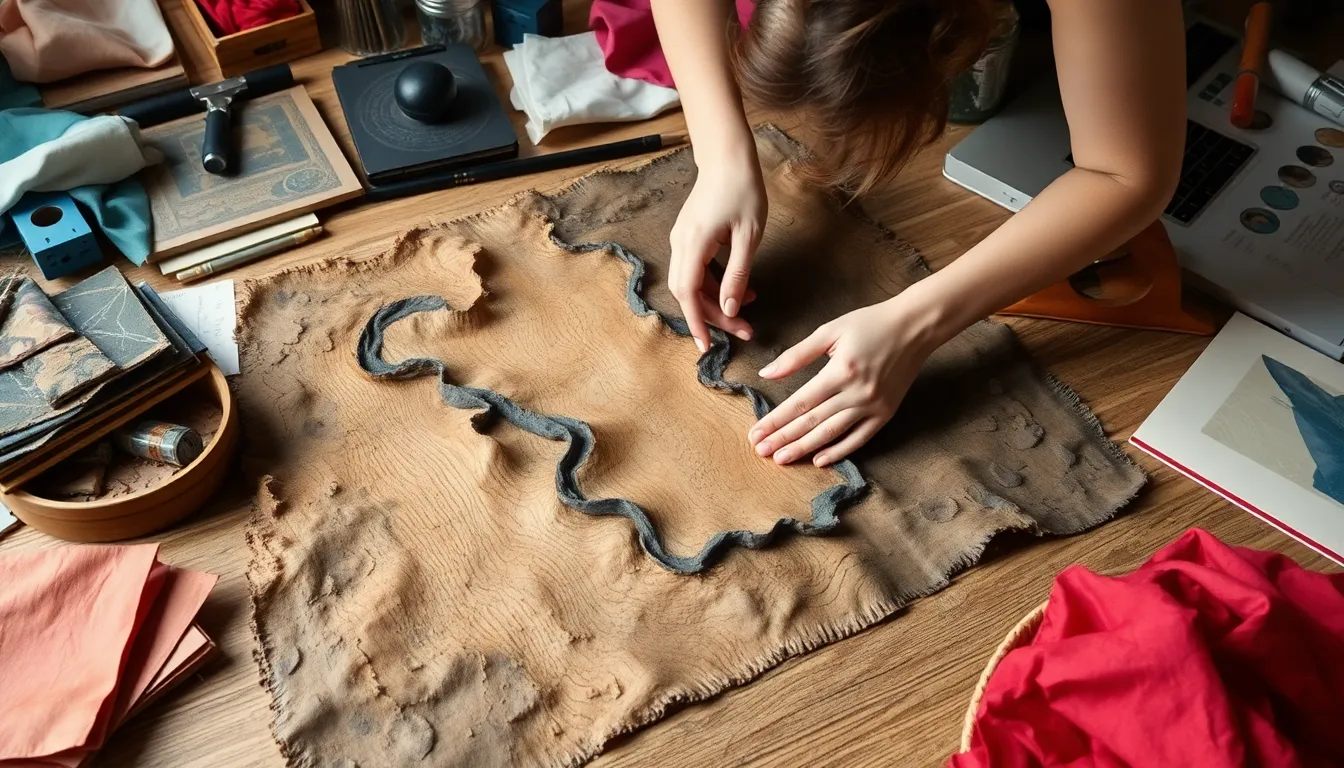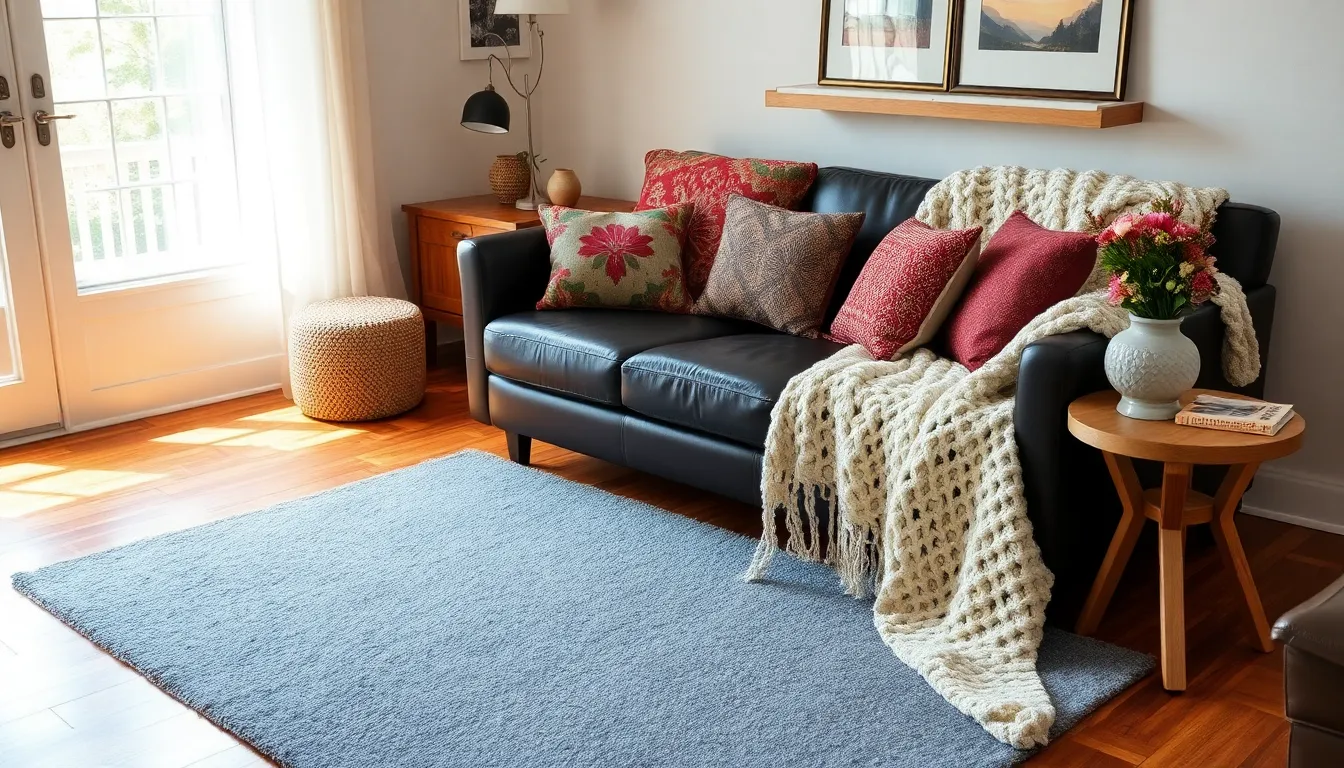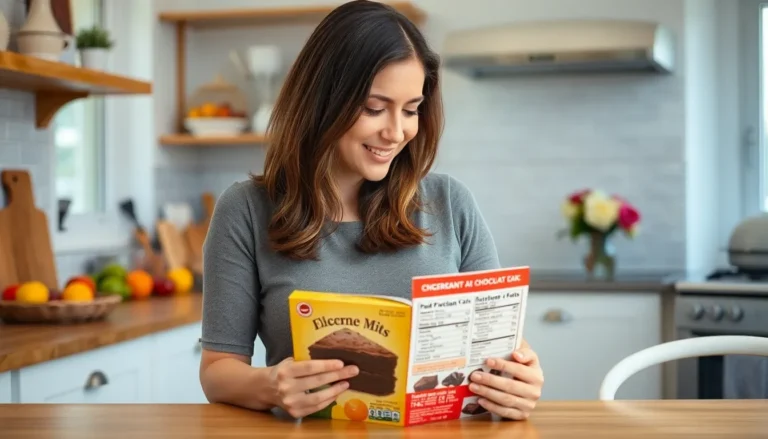Table of Contents
ToggleImagine stepping into a room that feels as inviting as your favorite blanket on a chilly day. That’s the magic of layered textures. They transform ordinary spaces into cozy havens, making even the most minimalist designs pop with personality. Whether it’s a plush rug atop sleek hardwood or a chunky knit throw draped over a smooth leather sofa, layering textures adds depth and intrigue to any setting.
Understanding Layered Textures
Layered textures enhance spaces, providing depth and warmth. This approach plays a vital role in interior design and various artistic expressions.
Definition of Layered Textures
Layered textures refer to the strategic combination of different materials, finishes, and tactile elements within a space. Combining textiles like linen, velvet, and wool can create a rich sensory experience. Thoughtfully mixing soft furnishings with hard surfaces, such as rugs on hardwood or cushions on leather, adds visual intrigue. The interplay of smooth and rough textures deepens the aesthetic appeal, inviting touch and interaction. Layering encourages exploration of a space, establishing comfort and style.
Importance in Various Art Forms
Art forms utilize layered textures to evoke emotion and convey meaning effectively. In visual arts, artists often mix mediums, creating diverse surface qualities that engage viewers. Combining paint with materials like sand or fabric enriches visual storytelling. In fashion design, layering textures can elevate garments, offering unique silhouettes and tactile experiences. Interior design benefits similarly, as layers of color and texture establish ambiance. Layered textures contribute to the overall narrative, making spaces and works of art more memorable and impactful.
Techniques for Creating Layered Textures

Creating layered textures involves employing various techniques to enhance spaces and artworks. The following methods explore both traditional and digital approaches.
Traditional Methods
Textile layering remains a fundamental technique for creating depth. Combining materials like silk, cotton, or wool allows for unique tactile experiences. Adding elements such as drapes, throws, or cushions introduces warmth to a design. Mixing patterns and colors plays a crucial role, as these variations prevent monotony. In addition, using different finishes, such as matte and glossy surfaces, creates visual intrigue. Incorporating natural elements like wood and stone provides an organic touch, enhancing overall texture. Implementing these various materials fosters a cozy and inviting atmosphere.
Digital Techniques
Digital creation offers innovative avenues for layering textures. Software like Adobe Photoshop or Illustrator enables intricate designs that simulate real-life textures. Artists can experiment with blending modes, allowing multiple layers to interact dynamically. Utilizing high-resolution images preserves detail, making textures more vivid. 3D modeling tools enhance tangible designs by adding depth and realism. By layering patterns and colors digitally, designers generate complex visuals that captivate viewers. Ultimately, these techniques empower creators to achieve impressive effects in both digital and physical spaces.
Applications of Layered Textures
Layered textures find diverse applications across various fields, enhancing both aesthetic and functional aspects of designs.
In Visual Arts
Visual artists frequently utilize layered textures to evoke emotions and deepen engagement. Textural contrasts, such as rough versus smooth surfaces, draw viewers’ attention while creating dynamic compositions. Many painters incorporate mixed media techniques, merging materials like paper, fabric, and paint. Artists achieve visual interest by manipulating depth and dimension, allowing their works to tell compelling stories. Haptic experiences are emphasized through the interplay of layered elements, transforming flat canvases into tactile explorations. This approach often invites viewers to interact more intimately with the artwork, ensuring memorable encounters.
In Design and Architecture
Designers and architects leverage layered textures to enhance spatial experiences. They combine materials like wood, glass, and metal, creating harmonious environments. Textured walls, for instance, can define areas within open-floor plans while adding visual interest. Rugs, furniture, and décor pieces contribute additional layers, allowing for customized aesthetics. Differentiating finishes, such as matte and glossy, further enriches design narratives. Incorporating plant life and natural elements strengthens the connection between interior spaces and the outdoors. Such thoughtful applications transform ordinary settings into inviting and stylish havens.
Analyzing the Impact of Layered Textures
Layered textures create engaging sensory experiences in design and art. They influence both emotional and aesthetic responses significantly.
Emotional and Aesthetic Effects
Emotions transform when layered textures interact within a space. Texture combinations provoke feelings of comfort and warmth, making environments more inviting. A plush rug paired with hardwood floors adds security, while a chunky knit throw on leather provides warmth. Aesthetically, diverse materials spark visual curiosity, drawing attention and creating depth. Textured contrasts enhance composition, allowing viewers to engage more profoundly with artwork or design. The blending of materials like soft fabrics with hard surfaces elevates the overall appeal. Engaging with these textures appeals not just visually but also by inviting touch, encouraging exploration.
Cultural Significance
Layered textures reflect cultural narratives across various disciplines. In many traditions, specific materials symbolize values and heritage. Combinations of silks, wool, and cotton reveal stories of craftsmanship and history. Artists embed cultural meanings in their use of texture, conveying messages that resonate universally. Architectural designs often feature layered textures to honor local aesthetics while fostering a sense of belonging. By integrating natural elements, these textures blur the lines between indoor and outdoor experiences. Cultures express identity and connection through textured designs, making spaces feel personal and meaningful.
Layered textures play a crucial role in shaping inviting and dynamic spaces. By thoughtfully combining various materials and finishes, designers can create environments that resonate emotionally and visually. This approach not only enhances the aesthetic appeal but also fosters a deeper connection between individuals and their surroundings. Whether in interior design or visual arts, the strategic use of texture transforms ordinary experiences into memorable ones. Embracing layered textures is essential for anyone looking to elevate their design narrative and create spaces that truly reflect personal style and cultural significance.








